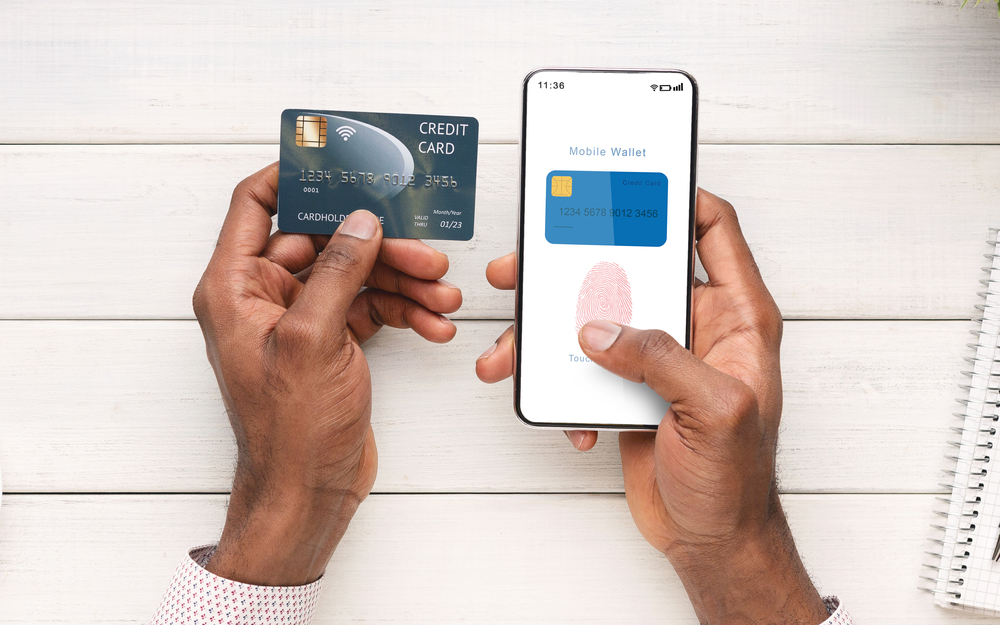Digital wallets are becoming increasingly popular as people look for ways to streamline their lives and simplify their finances. In 2021, 49% of total global ecommerce happened with digital wallets, and some analysts predict that will increase to 53% by 2025. In the UK, contactless payments are becoming so popular that they are more common than swiping a credit card. According to UK Finance, contactless payments now account for 60% of all credit card transactions and 74% of all debit card transactions.
Just as online banking revolutionised how consumers interacted with their banks, digital wallets are disrupting how consumers pay for goods and the types of physical cards and information they carry on their person.
What Is a Digital Wallet?
A digital wallet is a way to store your money and make payments online. You can use a digital wallet to store your credit and debit cards and bank information or to make payments to other people or businesses. Digital wallets have also expanded to include loyalty cards, library cards, event tickets and even driver’s licenses. Soon, carrying physical payment or identification may be a thing of the past.
There are many different types of digital wallets, but they all work in a similar way. Consumers add the cards and information they want to hold in their wallets. Then, anytime they interact with a merchant that accepts digital wallet payments, they have all the information they need to select their preferred payment method.
Digital wallets leverage Wi-Fi, near-field communication (NFC) and magnetic signals to pass data from a customer’s phone to a vendor’s point-of-sale (POS) system. Customers can store their digital wallets on their phones, tablets and smartwatches, making it more efficient to make payments whenever and wherever they happen to be.
Major digital wallet platforms like Apple Pay, Google Pay and Samsung Pay can be used anywhere that accepts credit cards. And there are also digital wallets designed for use with specific cryptocurrencies, such as Bitcoin. Other wallets like PayPal, Zelle, Venmo and Dwolla allow consumers to hold money in their accounts or transfer money from their bank to friends, family or vendors.
Digital wallets are a convenient way to store and use your money, and they can be a safe way to make payments online. When you use a digital wallet, your financial information is not shared with the merchant directly. Instead, a one-time token is issued by your processor and used to reference your card rather than sending over the card information. This encryption makes it harder for hackers to steal a customer’s financial information and make a purchase.
Why Customers Are Ditching Their Physical Credit Cards
Digital wallets are becoming increasingly popular as a way to store and manage money. There are several reasons for this: They can be used to make payments without carrying cash, to track spending and to manage multiple currencies.
Digital wallets can help consumers stay organised and keep track of their finances. They store all of their transactions in one place, so they easily see where their money is going and track their spending alongside their account balance with their banking apps.
Digital wallets can even help the estimated 6% of the population that does not have reliable access to banking services reduce their reliance on cash that can be easily stolen or misplaced. Instead, they can use a digital wallet to make financial transactions.
There are a number of different digital wallet providers. Many customers use the wallet associated with the phone and mobile operating system they use most frequently. This means that the most popular digital wallets are Apple Pay, Google Pay and Samsung Pay.
Apple Pay is the most popular digital wallet in the United States, with 48% of mobile wallet transactions flowing through their platform. Google takes second place with 17%, and Samsung Pay, PayPal and Walmart Pay lag behind.
Why Digital Wallets Make Sense for Customers and Merchants

There are many benefits of using a digital wallet for both the customer and the merchant. For the customer, it is a convenient way to store their credit card information and make payments. For the merchant, it is a way to reduce fraudulent activity and decrease payment processing time.
Digital wallets are becoming increasingly popular as people become more comfortable with using them. For customers, a digital wallet eliminates the need to carry around a physical wallet and makes it easy to pay. In addition, digital wallets are often more secure than physical wallets, as they are less likely to be lost or stolen.
For the merchant, digital wallets offer some significant benefits:
- Streamlined, customer-centric checkout. Particularly for ecommerce, including digital wallet options means customers are not interrupted during checkout to look for a physical card. Simply by logging into their digital wallet, they can use any of the cards they have included.
- Additional security protection. Thanks to digital wallet tokens, customers are not sending sensitive financial information to you when they use their digital wallets. Additionally, with two-factor authentication and biometric authentication, digital purchases are more likely to be legitimate, reducing fraudulent charges.
- Easily allow for many payment options. No matter how your customer likes to pay best, they will be able to complete their transaction on your site. And, with a digital wallet, that is one fewer integration you have to make.
Create a Customer-Centric Checkout with Digital Wallets
When it comes to creating a customer-centric checkout, one of the best things to do is offer digital wallet options. By allowing customers to pay with their preferred digital wallet, you make the checkout process quicker and easier for them. This functionality, in turn, can lead to higher satisfaction rates and more repeat customers.
You can offer several different digital wallets. So it is important to do your research to see which ones are the most popular with your target audience. Once you have decided which wallets to offer, you can start integrating them into your checkout process.
If you are ready to get started, contact us. Learn more about how digital wallets can boost your checkout conversion rates and delight your customers. ESW offers digital wallet payments for our customers. Learn more about how you can add this functionality to your ecommerce site today.





